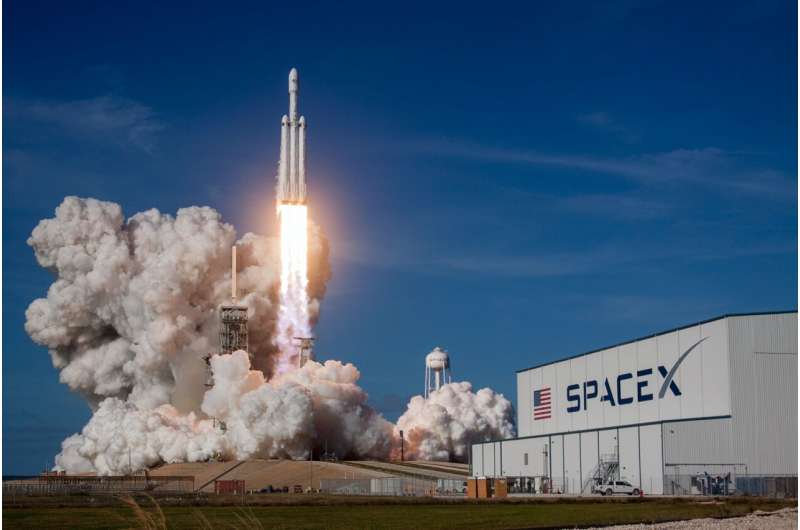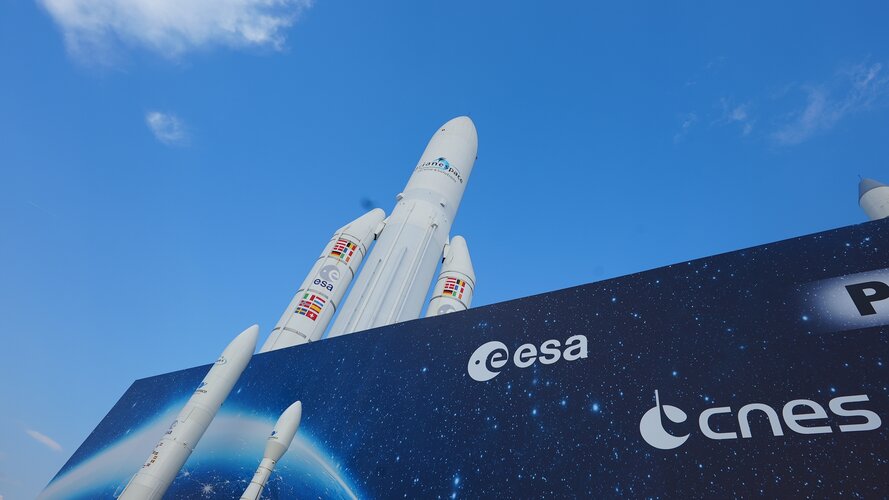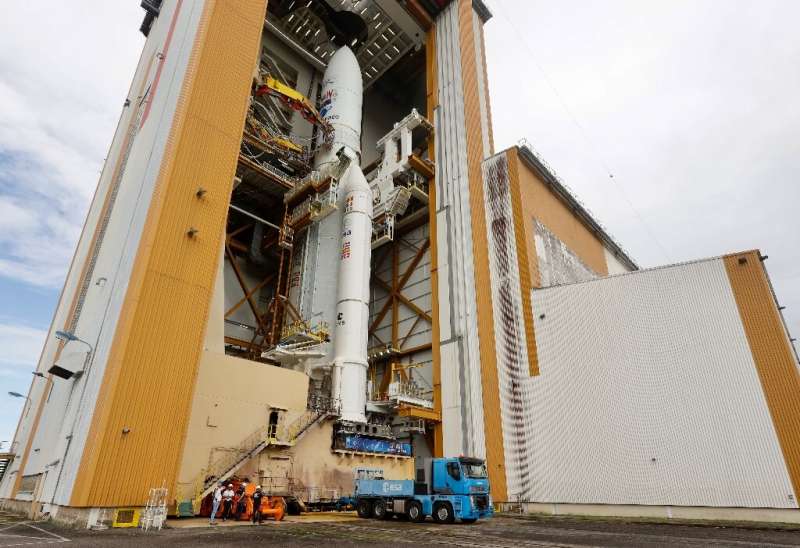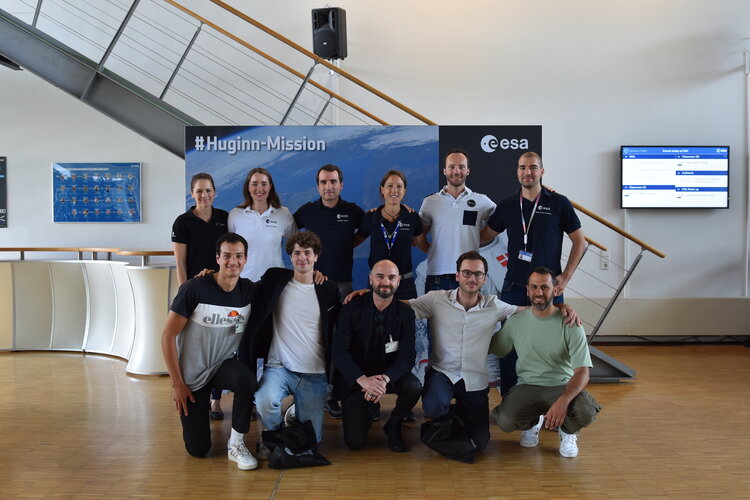
Copernical Team
SpaceX tender offer values it at around $150bn: report

Elon Musk's company SpaceX is offering to sell insider shares at a price that lifts its valuation to around $150 billion, according to a Bloomberg News report Friday.
The company—the first private company to send astronauts into orbit, among many other firsts—is initially seeking a $750 million tender offer, the report added.
Its valuation has climbed in recent years as it raised billions to finance its work, and according to Bloomberg, SpaceX is offering shares at over $80 apiece.
A CNBC report in January noted that SpaceX was raising $750 million in a round of funding that valued it at $137 billion.
According to Bloomberg News, SpaceX has around $5 billion of cash on its balance sheet.
In April, SpaceX saw the most powerful rocket ever built—Starship—blow up on its first flight, although Musk congratulated his SpaceX team on the test of the next-generation spacecraft designed to send astronauts to the Moon, Mars and beyond.
SpaceX also successfully deployed more than 50 added satellites on Friday, boosting a collection used to beam broadband internet coverage, according to reports.
Paris Air Show 2023 – Highlights of the week
 Video:
00:01:40
Video:
00:01:40
From Monday 19 to Sunday 25 June, at the ‘Space Pavilion’ of Paris Air Show 2023, ESA and CNES present ambitious new projects in space exploration, astronautics, Earth observation and security-related applications.
New date for Ariane 5 rocket's final launch after delay

Europe's workhorse Ariane 5 rocket will blast off for the final time on July 4, its operator Arianespace said on Friday, after a previous launch was called off due to a technical problem.
After 27 years of launches, the 117th and last mission to take off on an Ariane 5 rocket was originally scheduled for June 16 from Europe's spaceport in Kourou, French Guiana, but was called off the day before.
Europe’s Astronaut Centre welcomes winners of spacesuit design competition

Molecular filament shielded young solar system from supernova
 Isotope ratios found in meteorites suggest that a supernova exploded nearby while the Sun and Solar System were still forming. But the blast wave from a supernova that close could have potentially destroyed the nascent Solar System. New calculations shows that a filament of molecular gas, which is the birth cocoon of the Solar System, aided the capture of the isotopes found in the meteorites, wh
Isotope ratios found in meteorites suggest that a supernova exploded nearby while the Sun and Solar System were still forming. But the blast wave from a supernova that close could have potentially destroyed the nascent Solar System. New calculations shows that a filament of molecular gas, which is the birth cocoon of the Solar System, aided the capture of the isotopes found in the meteorites, wh Never before seen way to annihilate a star
 Astronomers studying a powerful gamma-ray burst (GRB) with the Gemini South telescope, operated by NSF's NOIRLab, may have detected a never-before-seen way to destroy a star. Unlike most GRBs, which are caused by exploding massive stars or the chance mergers of neutron stars, astronomers have concluded that this GRB came instead from the collision of stars or stellar remnants in the jam-packed e
Astronomers studying a powerful gamma-ray burst (GRB) with the Gemini South telescope, operated by NSF's NOIRLab, may have detected a never-before-seen way to destroy a star. Unlike most GRBs, which are caused by exploding massive stars or the chance mergers of neutron stars, astronomers have concluded that this GRB came instead from the collision of stars or stellar remnants in the jam-packed e New era of exoplanet discovery begins with images of 'Jupiter's Younger Sibling'
 Astronomers using W. M. Keck Observatory on Maunakea, Hawaii Island have discovered one of the lowest-mass planets whose images have been directly captured. Not only were they able to measure its mass, but they were also able to determine that its orbit is similar to the giant planets in our own solar system.
The planet, called AF Lep b, is among the first ever discovered using a technique
Astronomers using W. M. Keck Observatory on Maunakea, Hawaii Island have discovered one of the lowest-mass planets whose images have been directly captured. Not only were they able to measure its mass, but they were also able to determine that its orbit is similar to the giant planets in our own solar system.
The planet, called AF Lep b, is among the first ever discovered using a technique Welcome to Kalavryta: Sols 3866-3867
 Time, it never seems to pass at a constant rate. Today is summer solstice here in the northern hemisphere on Earth; the longest "day" of the year. It was only fitting time was at the forefront of planning today, particularly at the onset.
For starters, in order to better synchronize with Curiosity's workday, our shifts started later than usual in order to permit requisite data from the pre
Time, it never seems to pass at a constant rate. Today is summer solstice here in the northern hemisphere on Earth; the longest "day" of the year. It was only fitting time was at the forefront of planning today, particularly at the onset.
For starters, in order to better synchronize with Curiosity's workday, our shifts started later than usual in order to permit requisite data from the pre Space travel alters gene expression in white blood cells, weakening our immune system
 Evidence is mounting that astronauts are more susceptible to infections while in space. For example, astronauts on board the International Space Station (ISS) commonly suffer from skin rashes, as well as respiratory and non-respiratory diseases. Astronauts are also known to shed more live virus particles, for example Epstein-Barr virus, varicella-zoster responsible for shingles, herpes-simplex-1
Evidence is mounting that astronauts are more susceptible to infections while in space. For example, astronauts on board the International Space Station (ISS) commonly suffer from skin rashes, as well as respiratory and non-respiratory diseases. Astronauts are also known to shed more live virus particles, for example Epstein-Barr virus, varicella-zoster responsible for shingles, herpes-simplex-1 New gravitational waves observation run to reveal more of the universe's secrets
 A new observation run to search for ripples in space-time generated by colliding black holes and other extreme cosmic events will take gravitational wave astronomy to the next level, scientists claim.
Upgraded instruments, some of which use Cardiff University-built technology, new and even more accurate signal models, and more advanced data analysis methods mean the 20-month observation wi
A new observation run to search for ripples in space-time generated by colliding black holes and other extreme cosmic events will take gravitational wave astronomy to the next level, scientists claim.
Upgraded instruments, some of which use Cardiff University-built technology, new and even more accurate signal models, and more advanced data analysis methods mean the 20-month observation wi 
